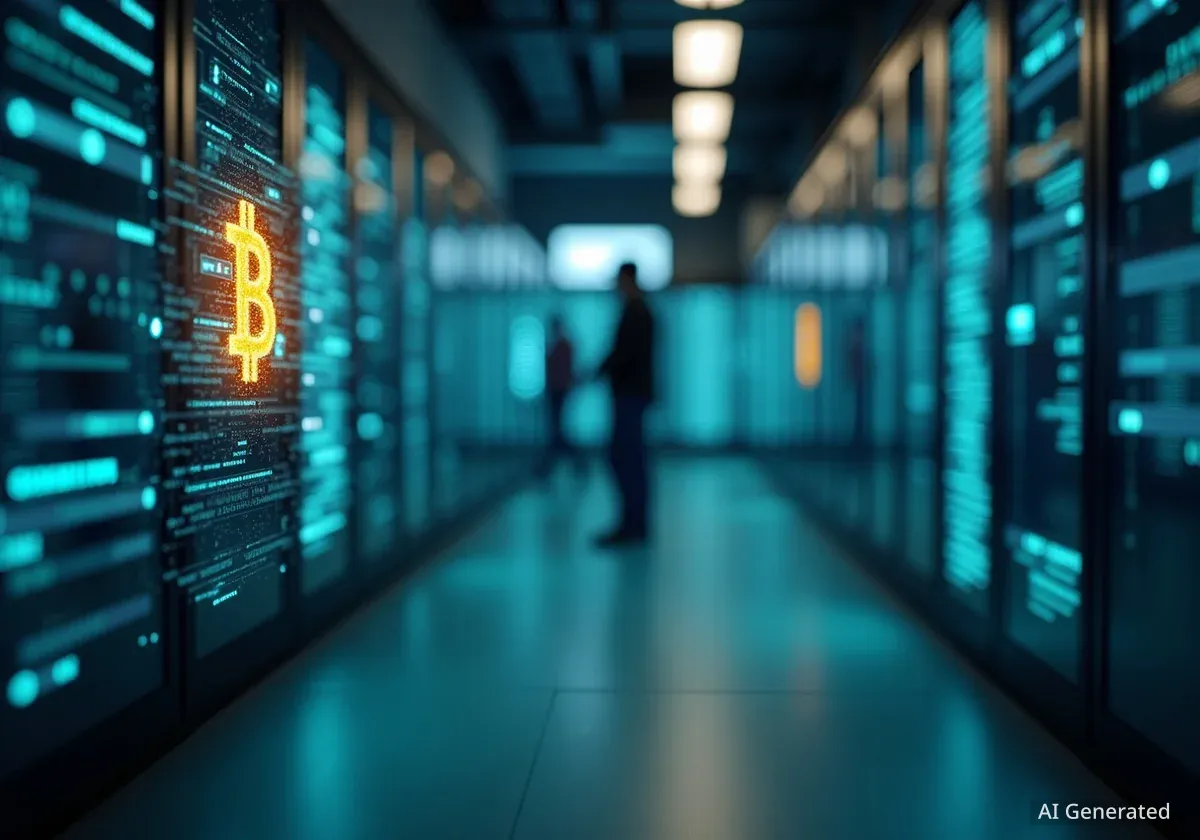Author Adam Livingston has issued a stark warning, suggesting individuals have a five-year window to acquire Bitcoin before artificial intelligence fundamentally devalues human economic contributions. He argues that as AI automates cognitive tasks, the traditional labor market will face an unprecedented disruption, making scarce digital assets a crucial tool for preserving financial autonomy.
Key Takeaways
- Adam Livingston, author of "The Bitcoin Age," predicts AI will significantly diminish the economic value of human labor within the next five years.
- He advocates for acquiring Bitcoin, describing it as a finite asset that can act as a safeguard against the economic shifts caused by AI.
- The warning is supported by labor market data, including a survey where 41% of companies anticipate AI-related layoffs and rising youth underemployment rates.
- Livingston's thesis posits that in an era of digital replication, assets with provable scarcity like Bitcoin will become essential for financial sovereignty.
AI's Impact on Economic Value
According to Adam Livingston, the advancement of artificial intelligence represents more than a technological upgrade; it is a fundamental shift that could obsolete many forms of human labor. His analysis suggests that AI is moving beyond simple augmentation of human tasks to actively replicating and replacing human cognitive functions.
“AI is not merely augmenting human capacity… it absorbs, replicates, and ultimately obsoletes it,” Livingston stated, highlighting the transformative nature of the technology.
This perspective frames AI not as a collaborative tool but as a direct competitor to human capital. Livingston argues that the traditional pillars of economic security—education, specialized skills, and career progression—are becoming increasingly vulnerable as AI's capabilities expand at an exponential rate.
Labor Market Indicators Signal Change
Current labor statistics appear to support the concerns raised by Livingston. Recent data reveals growing instability, particularly for younger generations and those in entry-level positions, which are often the first to be affected by automation.
AI and Corporate Layoffs
A survey conducted by Kalshi found that 41% of companies intend to lay off employees as a direct result of implementing artificial intelligence within the next five years. This indicates a significant portion of the corporate sector is already planning for a workforce with a reduced human component.
Further evidence comes from youth employment figures. The three-month average for youth underemployment has reached 17%, its highest point since 2020. This metric includes young people who are working part-time but want full-time hours or have stopped looking for work altogether.
The broader U.S. underemployment rate, which provides a more comprehensive view of labor market health, stands at 8.1%. This figure reflects a growing number of workers in precarious employment situations, struggling to find sufficient hours and stable income.
The Disappearance of Entry-Level Roles
A key aspect of this trend is the automation of entry-level jobs. These positions have historically served as the primary entry point into the workforce for new graduates. As AI systems become more adept at handling routine administrative and analytical tasks, these opportunities are diminishing, creating a more competitive and challenging environment for Generations Z and Alpha.
Bitcoin as a Financial Safeguard
In response to this projected economic disruption, Livingston proposes a specific strategy: accumulating Bitcoin. He frames the cryptocurrency not as a speculative investment but as a form of "monetary sovereignty" in an increasingly automated world.
The core of his argument rests on the principle of scarcity. While AI can create and replicate digital information, content, and processes infinitely, Bitcoin's supply is mathematically capped at 21 million coins. This inherent, unchangeable scarcity makes it a unique asset in the digital age.
What is Provable Scarcity?
Provable scarcity refers to an asset whose total supply is fixed and can be independently verified by anyone. In Bitcoin's case, its supply limit is encoded in its core protocol, secured by a global network of computers. Unlike traditional currencies, which can be created by central banks, no single entity can increase Bitcoin's supply beyond its predetermined cap.
Livingston describes Bitcoin as a “counter-algorithm” to the boundless replication enabled by AI. He insists that acquiring Bitcoin over the next five years is less about wealth maximization and more about securing a financial position that is immune to the devaluation affecting other assets, including human labor.
Preparing for the 'Great Harvest'
Livingston uses the term “the great harvest” to describe the period where AI systematically absorbs the value previously generated by human cognition. To navigate this era, he advises building a portfolio centered on sovereignty and resilience.
“Surviving the great harvest will require stacking a sovereignty portfolio,” he advises, placing Bitcoin at the foundation of this strategy.
The logic is that if one's ability to earn income through labor is diminished, owning an unconfiscatable and unreplicable asset becomes paramount. He argues that assets that cannot be diluted or controlled by governments or corporations will hold the most value in a future defined by digital abundance and automation.
The message is presented with a sense of urgency. The five-year timeframe is not arbitrary but is based on the rapid pace of AI development and its observed effects on the job market. According to this view, the window to prepare for a world where machines set the economic terms is closing rapidly, and proactive measures are needed to maintain financial independence.





